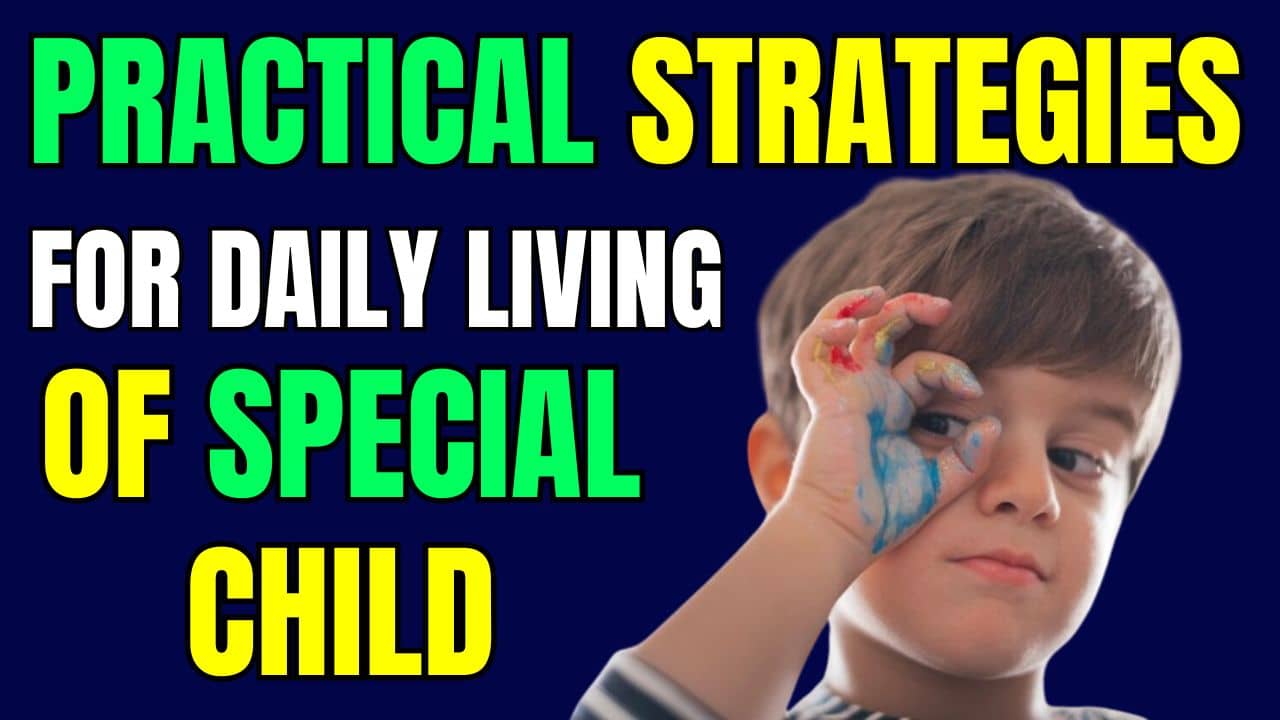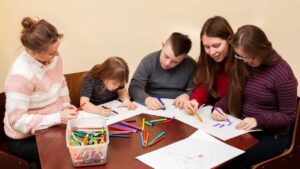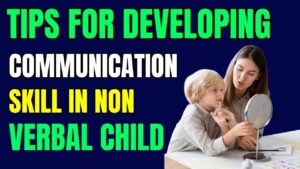Raising a child with special needs can be an incredibly rewarding experience, filled with unique joys and challenges. Whether it’s managing morning routines, tackling bath time, or navigating social interactions, everyday tasks can sometimes require additional support and creative thinking.
This blog post is here to empower you on this journey! We’ll delve into practical strategies that can make a significant difference in your child’s daily life. From building routines to harnessing technology and exploring creative solutions, we’ll offer a range of helpful tips and tricks. Remember, even small adjustments can contribute to fostering independence, boosting confidence, and making daily life smoother for both you and your child. So, let’s dive in and discover how to empower your special child to thrive in everyday situations!
1. Practical Strategies for Daily Living
Navigating daily living with a child with Autism Spectrum Disorder (ASD) involves implementing practical strategies that enhance the child’s comfort, independence, and overall well-being. This chapter provides various practical strategies for daily life, including routines, communication, sensory sensitivities, and self-care.
1. Establishing Predictable Routines:
- Create and maintain consistent daily routines to provide predictability.
- Visual schedules and timers help the child understand and anticipate daily activities.
2. Visual Supports for Communication:
- Implement visual supports such as visual schedules, social stories, and cue cards.
- Use visual aids to enhance communication and understanding of expectations.
3. Social Stories for Social Skills:
- Develop social stories that explain social situations and expected behaviours.
- Use visuals and simple language to help the child navigate social interactions.
4. Sensory-Friendly Environments:
- Identify and minimize sensory triggers in the environment.
- Provide sensory-friendly spaces with options for sensory breaks.
5. Gradual Exposure to New Experiences:
- Introduce new experiences gradually to reduce anxiety.
- Use a desensitization approach to help the child adapt to new environments or activities.
6. Visual Cues for Transitions:
- Use visual cues like a countdown timer or transition cards to signal upcoming transitions.
- Provide advance notice and visual reminders before transitions occur.
7. Simplifying Instructions:
- Break down instructions into simple, clear steps.
- Use visual supports to reinforce verbal instructions.
8. Incorporating Special Interests:
- Utilize the child’s unique interests in daily activities and learning.
- Integrate preferred themes or topics into educational and recreational activities.
9. Structured and Visual Mealtime Routines:
- Establish structured mealtime routines with visual cues.
- Use visual supports for choosing meals and indicating mealtime expectations.
10. Reinforcement and Positive Feedback:
- Provide positive reinforcement for desired behaviours.
- Use a system of rewards, tokens, or praise to motivate and encourage the child.
11. Encouraging Independence in Self-Care:
- Break down self-care tasks into manageable steps.
- Encourage and support the child in developing independence in activities like dressing, grooming, and mealtime.
12. Visual Schedules for Self-Care Routines:
- Create visual schedules for self-care routines.
- Include pictures or icons to represent each step in the routine.
13. Using Technology to Support learning:
- Leverage educational apps, interactive games, and online resources to support learning.
- Choose technology tools that align with the child’s interests and learning style.
14. Communication Apps and AAC Devices:
- Explore communication apps and augmentative and alternative communication (AAC) devices.
- Tailor these tools to the child’s communication preferences and abilities.
15. Collaborative Problem-Solving:
- Involve the child in collaborative problem-solving.
- Encourage the child to express preferences and participate in finding solutions to challenges.
16. Encouraging Physical Activities:
- Incorporate physical activities that align with the child’s interests.
- Use structured and engaging activities to promote gross motor skills.
17. Coordinated Home and School
- Collaborate with educators to align strategies used at home and school.
- Share information about successful interventions and approaches across settings.
18. Promoting Social Connections:
- Facilitate social opportunities, such as playdates or structured group activities.
- Use visual supports to teach and reinforce social skills.
19. Sensory Breaks:
- Schedule sensory breaks to allow the child to self-regulate.
- Provide a designated sensory-friendly space for breaks.
20. Encouraging Flexibility:
- Gradually introduce changes to routines to build flexibility.
- Use visual supports and social stories to prepare the child for upcoming changes.
By implementing these practical strategies, parents can create a supportive and enriching environment that addresses the unique needs of their child with ASD. Tailoring strategies to the child’s preferences and incorporating visual supports can enhance communication, reduce anxiety, and promote independence in daily living. Regular communication with therapists and educators ensures a collaborative approach that supports the child across various settings.
A. Communication Skills
Effective communication is a cornerstone of how individuals with Autism Spectrum Disorder (ASD) connect with others and navigate the world. This chapter explores strategies and interventions to support the development of communication skills in children with ASD, encompassing verbal and nonverbal communication.
1. Early Intervention for Communication:
- Initiate early intervention strategies to foster communication development.
- Address communication challenges proactively to enhance the child’s overall communication skills.
2. Speech and Language Therapy:
- Engage in regular speech and language therapy sessions.
- Focus on expressive and receptive language skills, tailoring interventions to the child’s needs.
3. Augmentative and Alternative Communication (AAC):
- Explore AAC tools, including picture boards, devices, or apps.
- Introduce and support the use of visual symbols or gestures to facilitate communication.
4. Visual Supports:
- Implement visual supports such as visual schedules, social stories, and visual cues.
- Use visuals to enhance understanding, provide structure, and support communication.
5. Social Skills Training:
- Include social skills training as part of the child’s intervention plan.
- Focus on teaching turn-taking, sharing, and other essential social interactions.
6. Peer-Mediated Interventions:
- Facilitate interactions with neuro-typical peers.
- Use structured activities and interventions to promote positive social engagement.
7. Functional Communication Training (FCT):
- Implement FCT to teach and reinforce functional communication.
- Identify and address the underlying purposes of the child’s communication behaviours.
8. Speech Output Devices:
- Explore the use of speech-generating devices.
- Integrate these devices to support expressive communication for nonverbal individuals.
9. Prompting and Modelling:
- Use prompting and modelling techniques to encourage communication.
- Gradually fade prompts as the child becomes more independent in using communication skills.
10. Visual Timetables and Schedules:
- Utilize visual timetables and schedules to enhance understanding of daily activities.
- Provide a visual representation of the sequence of events throughout the day.
11. Social Stories and Scripts:
- Create social stories and scripts to help the child navigate social situations.
- Use narratives to explain social expectations and appropriate responses.
12. Joint Attention Activities:
- Engage in joint attention activities to promote shared focus.
- Use play and interactive activities to encourage joint attention skills.
13. Emphasis on Nonverbal Communication:
- Recognize and support nonverbal forms of communication, such as gestures, facial expressions, and body language.
- Encourage the child to use and interpret nonverbal cues in social interactions.
14. Video Modelling:
- Incorporate video modelling to demonstrate appropriate communication behaviours.
- Use video examples to teach and reinforce specific communication skills.
15. Collaborative Communication Goals:
- Collaborate with speech therapists, educators, and other professionals to set communication goals.
- Ensure consistency in communication strategies across home and school settings.
16. Incorporating Special Interests:
- Utilize the child’s unique interests to motivate and engage in communication.
- Integrate preferred topics into communication activities to enhance interest and participation.
17. Encouraging Functional Communication:
- Emphasize the development of functional communication skills that meet the child’s needs.
- Support the child in expressing desires, making requests, and sharing information.
18. Building on Strengths:
- Identify and build on the child’s strengths in communication.
- Tailor interventions to capitalize on the child’s unique abilities and preferences.
19. Parental Involvement:
- Involve parents in communication interventions to promote consistency.
- Provide training and resources for parents to support communication development at home.
20. Ongoing Assessment and Adjustments:
- Conduct ongoing assessments of the child’s communication progress.
- Adjust interventions based on the child’s evolving needs and achievements.
Implementing these communication interventions can help parents play a crucial role in supporting their child’s communication development. Tailoring strategies to the child’s preferences, strengths, and challenges fosters a communicative environment that enhances social connections and overall well-being. Regular collaboration with speech therapists and educators ensures a coordinated approach that maximizes the impact of interventions across different settings.





